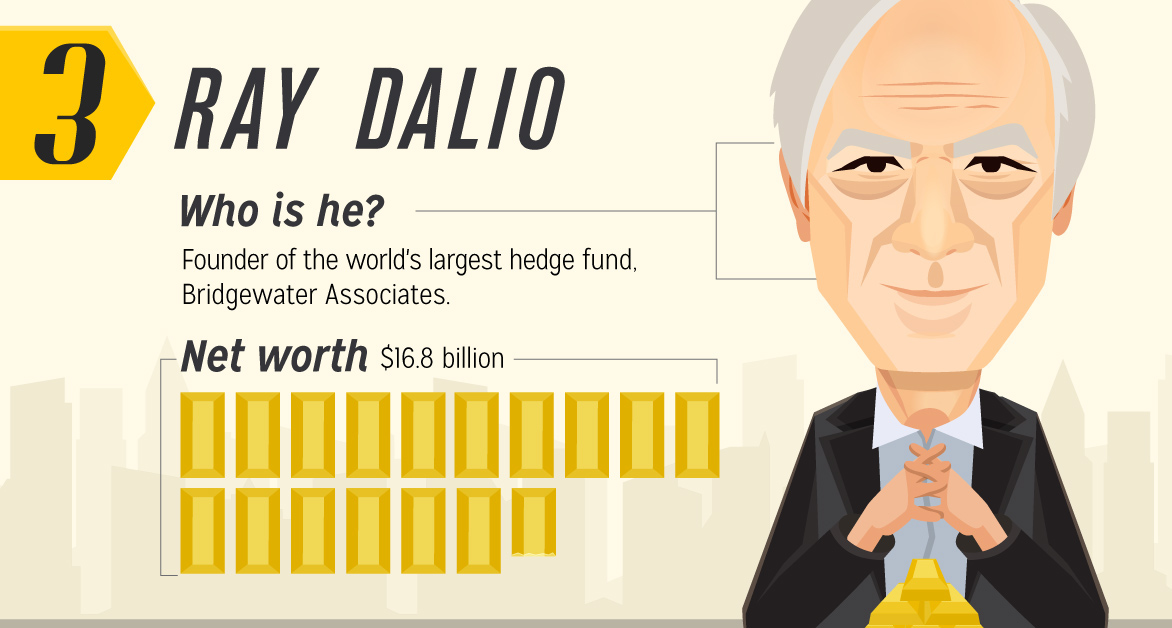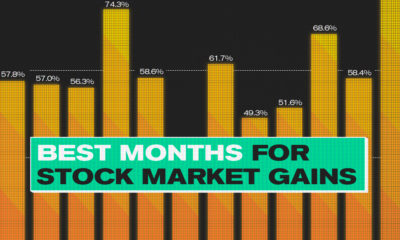Unlike regular investors, billionaire money managers like Ray Dalio and Stan Druckenmiller are professional investors. They have entire institutional teams at their disposal, dive deep into the nuances and complexities of the market, and spend every waking moment of their lives thinking about how to get more from their investments. They want to make money – but they also want to execute on strategies that will protect their wealth and build robust portfolios that can withstand any type of macro event.
Turning to Gold
In recent months, some of these elite investors have turned to precious metals like gold as a part of their overall investment strategies. In the following infographic from Sprott Physical Bullion Trusts, we explain why these investors are adding precious metals to their portfolios, the underlying tactics, and the best quotes each investor has on assessing today’s market.
Why are these billionaires buying precious metals? Their cited reasons can basically be summed up with six categories: wealth preservation, store of value, inflation hedge, portfolio diversification, future upside, and investment fundamentals.
What Billionaire Investors are Doing
- Lord Jacob Rothschild In late summer 2016, Rothschild announced changes to the RIT Partners portfolio because he was worried about very low interest rates, negative yields, and quantitative easing, saying they are part of the “greatest monetary experiment in monetary policy in the history of the world”. His solution? Buy gold to help preserve wealth, and as a store of value for the future.
- David Einhorn Einhorn has a similar assessment. He believes that monetary policy is becoming increasingly adventurous, and that this – along with the policies of the Trump administration – will eventually lead to large amounts of inflation. In February 2017, he shorted sovereigns, and bought gold.
- Ray Dalio Ray Dalio is the founder of the world’s top hedge fund, Bridgewater Associates, but he’s also no stranger to gold. – Ray Dalio, Bridgewater Associates More recently, in 2016, Dalio is quoted as telling investors to own a well-diversified portfolio that is 5-10% gold.
- Stanley Druckenmiller Druckenmiller, some people argue, is the best money manager of all time. Lately, he’s placed his bets on gold as well, but for different reasons than the above managers. Druckenmiller has always placed big trades with lots of conviction, and in February 2017 he put his money in gold because “no country wants its currency to strengthen”. on These are in the form of Treasury securities, some of the most liquid assets worldwide. Central banks use them for foreign exchange reserves and private investors flock to them during flights to safety thanks to their perceived low default risk. Beyond these reasons, foreign investors may buy Treasuries as a store of value. They are often used as collateral during certain international trade transactions, or countries can use them to help manage exchange rate policy. For example, countries may buy Treasuries to protect their currency’s exchange rate from speculation. In the above graphic, we show the foreign holders of the U.S. national debt using data from the U.S. Department of the Treasury.
Top Foreign Holders of U.S. Debt
With $1.1 trillion in Treasury holdings, Japan is the largest foreign holder of U.S. debt. Japan surpassed China as the top holder in 2019 as China shed over $250 billion, or 30% of its holdings in four years. This bond offloading by China is the one way the country can manage the yuan’s exchange rate. This is because if it sells dollars, it can buy the yuan when the currency falls. At the same time, China doesn’t solely use the dollar to manage its currency—it now uses a basket of currencies. Here are the countries that hold the most U.S. debt: As the above table shows, the United Kingdom is the third highest holder, at over $655 billion in Treasuries. Across Europe, 13 countries are notable holders of these securities, the highest in any region, followed by Asia-Pacific at 11 different holders. A handful of small nations own a surprising amount of U.S. debt. With a population of 70,000, the Cayman Islands own a towering amount of Treasury bonds to the tune of $284 billion. There are more hedge funds domiciled in the Cayman Islands per capita than any other nation worldwide. In fact, the four smallest nations in the visualization above—Cayman Islands, Bermuda, Bahamas, and Luxembourg—have a combined population of just 1.2 million people, but own a staggering $741 billion in Treasuries.
Interest Rates and Treasury Market Dynamics
Over 2022, foreign demand for Treasuries sank 6% as higher interest rates and a strong U.S. dollar made owning these bonds less profitable. This is because rising interest rates on U.S. debt makes the present value of their future income payments lower. Meanwhile, their prices also fall. As the chart below shows, this drop in demand is a sharp reversal from 2018-2020, when demand jumped as interest rates hovered at historic lows. A similar trend took place in the decade after the 2008-09 financial crisis when U.S. debt holdings effectively tripled from $2 to $6 trillion.
Driving this trend was China’s rapid purchase of Treasuries, which ballooned from $100 billion in 2002 to a peak of $1.3 trillion in 2013. As the country’s exports and output expanded, it sold yuan and bought dollars to help alleviate exchange rate pressure on its currency. Fast-forward to today, and global interest-rate uncertainty—which in turn can impact national currency valuations and therefore demand for Treasuries—continues to be a factor impacting the future direction of foreign U.S. debt holdings.

















